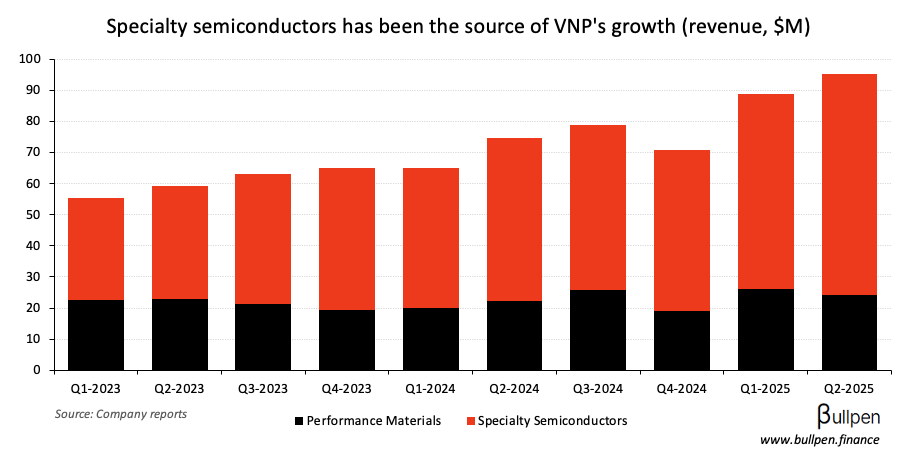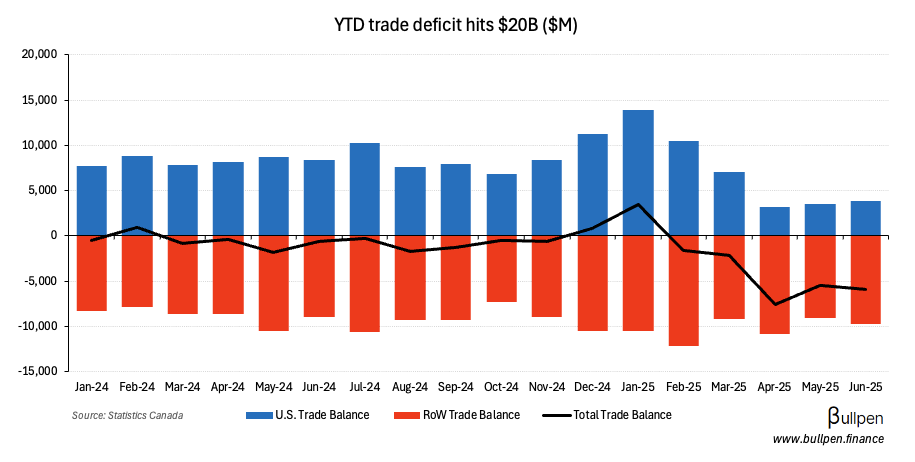With tariffs paused, Canada needs to avoid this fight
Markets breathed a sigh of relief on Tuesday following news that there would be a 30-day pause on the tariffs implemented by the U.S. and on Canada’s retaliatory measures.
During the quiet period, the two countries will work to beef up defense at the border and if progress is adequate, we could get out of this trade dispute unscathed - it seems Trump is looking to make deals to tighten the balance of trade, not crush economies.

I am very pleased with this initial outcome, and the Tariffs announced on Saturday will be paused for a 30 day period to see whether or not a final Economic deal with Canada can be structured.
Clearly we’re not out of the woods yet, and if a deal isn’t reached over the next month, we could be back to square one. Here’s why Canada needs to avoid that at all costs.
We’re not even close to the pole position
Pushing the size difference between our two economies aside, we have very little leverage in a trade dispute with the U.S., given our over-reliance on their economy to support our own.
Post-pandemic, much of the growth in our GDP was driven by U.S. exports, which represented more than 25% of our total GDP in 2023.

As a result of our dependence on the U.S., we haven’t meaningfully diversified internationally, with America accounting for nearly three quarters of our total exports.

These trade relationships take time to develop, meaning a sudden roadblock in the flow of Canadian goods south would not be able to be diverted in the same quantity elsewhere, impacting jobs.
Today, roughly 1.2M workers are directly tied to U.S. exports, with the figure doubling to 2.4M if you also consider the workers upstream of those 1.2M.
For every 5% of these workers laid off due to tariffs, unemployment would jump 0.27% and 0.54%, respectively. A scary thought with the unemployment already sitting at 6.7%.

Such a scenario would require economic stimulus, but can we afford it?
Canada carries relatively high debt levels on the personal, corporate and government level. Combined with a weak CAD and a challenging labour market, the BoC would be stuck between a rock and a hard place.

Canada should play the long game
The natural pushback to the position we take above is something to the effect of “we’ll keep getting bullied if we don’t punch back”.
That’s true.
But taking our lumps, regrouping, and getting stronger internally would give us more leverage in any future disputes we may have.
That could include nurturing trade relationships with other countries, or knocking down the barriers to provincial trade, which economists predict could add up to 7% to GDP.

In either case, further diversifying the end markets for our goods insulates us from the economic fallout we’re exposed to this time around. It gives us more leverage than we have today.
Where does Canada have leverage?
If we do end up in a fight with our neighbour the outlook would be bleak, but there are a few disruptive levers we could pull to try and avoid a prolonged dispute.
The Three Ps: Power, Petroleum, and Potash
As we highlighted in a previous bite, Canada’s role in America’s electricity supply could become topical in the months to come. The U.S. northeast faces high power prices in the winter and relies on Canadian electrons to stabilize the market.

America also has big ambitions for nuclear power. A full-scale buildout requires a reliable supply of Uranium, of which Canada is critically important.

We’re also crucial to America’s energy mix, accounting for 60% of its total crude oil imports and over half of the country’s total petroleum imports.

Perhaps the biggest trade linchpin we have is in agriculture. America relies heavily on imports for its potash supply given its limited internal production capacity, and as it stands today, Canada accounts for almost 90% of its total imports.

Get smarter on Canadian markets
Get our insight-packed coverage of Canadian markets delivered to your inbox 3x per week in 5 minutes or less.
Get smarter on Canadian markets
Get The Morning Meeting, our insight-packed Canadian markets newsletter delivered to your inbox 3x per week in 5 minutes or less.
Read by 1,000+ professionals from:

